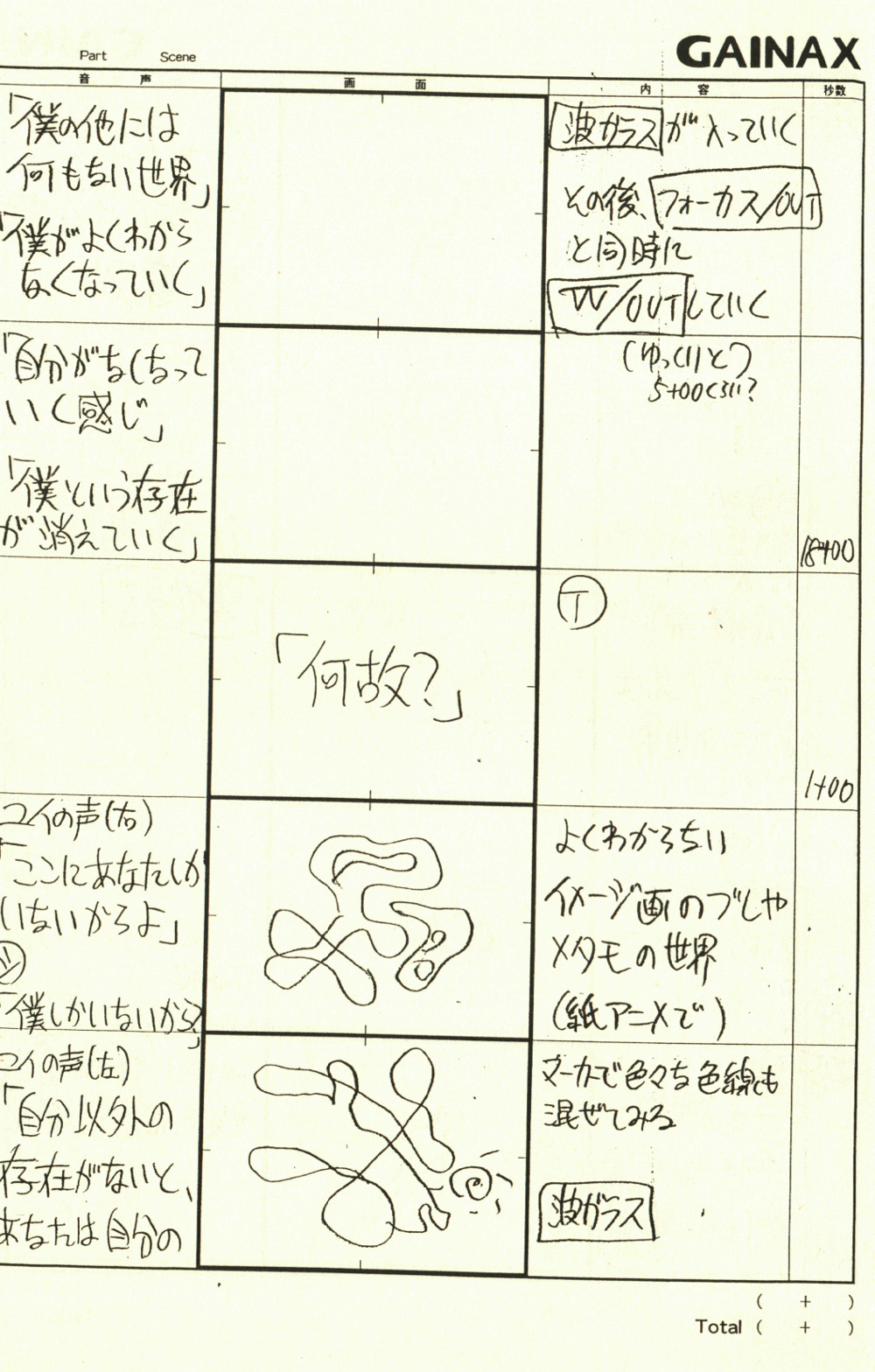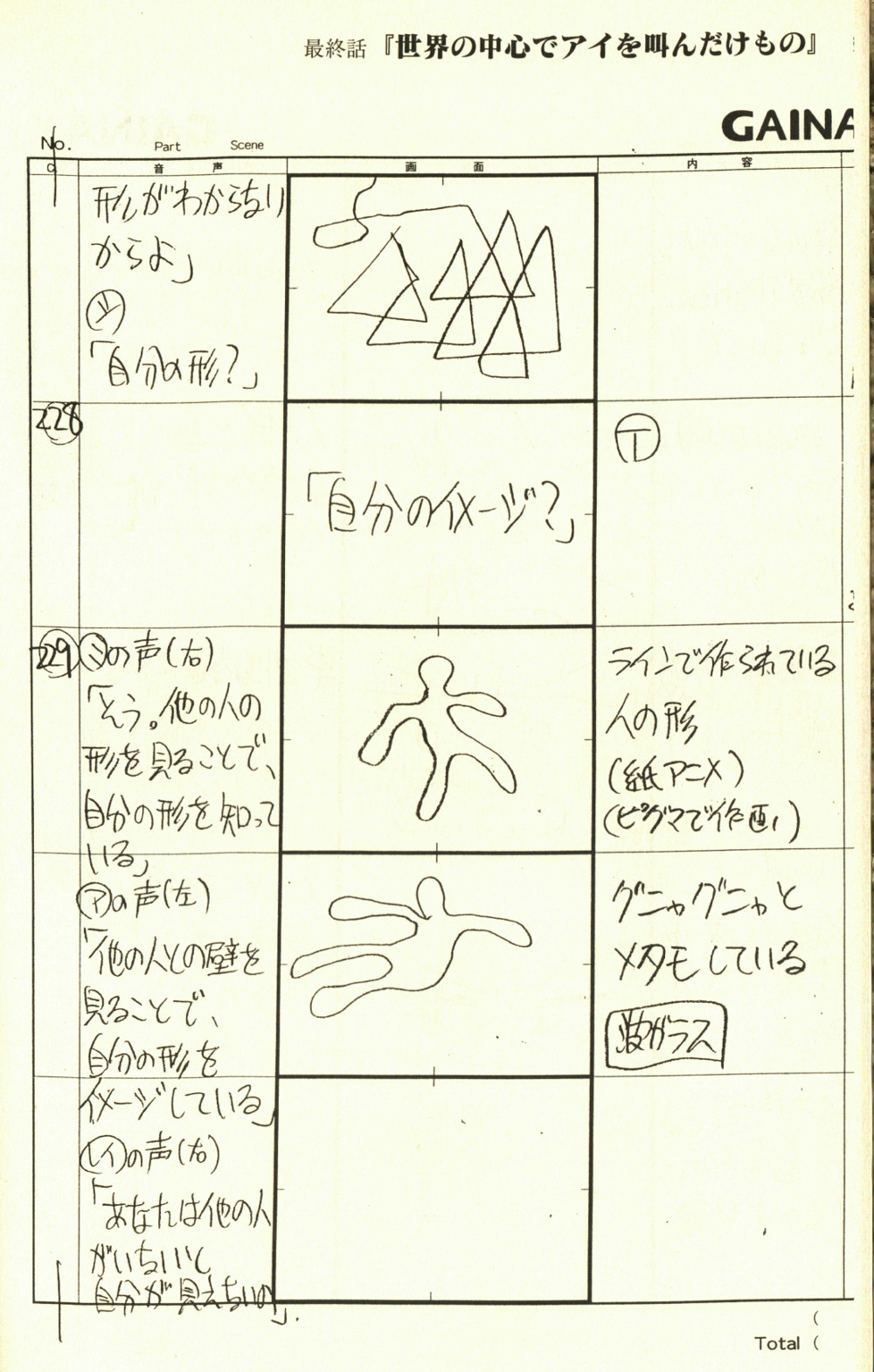It’s not every day that you get to see an animator’s raw creative and unbridled ability on display. What I mean by that are these little moments when the animator has such complete creative control over what they are drawing – today’s cut from the final episode of Neon Genesis Evangelion is such an example.
It’s not every day that you get to see an animator’s raw creative and unbridled ability on display. What I mean by that are these little moments when the animator has such complete creative control over what they are drawing – today’s cut from the final episode of Neon Genesis Evangelion is such an example.
It’s no secret that the finale of Evangelion ran into production issues (putting it lightly) during its finale. A large portion of those final two episodes was incomplete, to the point that ‘next time’ previews for each respective episode were unfinished, having only rough key frames (some of which never made it into the episodes and was instead moved to the conclusive film) to show. That said, the story boards too were in a similar disarray.
The animator for the cut we’re focusing on today, the legendary Yoh Yoshinari, had this to say about the storyboards:
There were only brief indications about the content on the storyboard… The context was quite special too. The production was hard-pushed, and we didn’t even know if the episode could air in time, so it almost felt like we could draw whatever we wanted to.
Looking at the original storyboards for this cut, we can see that Yoshinari is being quite modest when he says “brief indications”. Instructions in the margins are vague, to say the least. Director Hideaki Anno’s notes boil down to phrases like, ‘use different color markers’ and ‘some transformations here’, the most detailed being a ‘flappy metamorphosis’.
Using what little he has to go on, Yoshinari works his magic, as he goes through a series of shapes and forms seamlessly. To achieve this, Yoshinari alternates between animating on the 1’s and 2’s (a new image every one to two frames respectively).
It’s really quite lavish the way he does so, having explosions of movement and transformations between shapes on the 1’s, and solid forms on the 2’s. The slower (on the 2’s) animation allows the forms on screen to retain a sense of weight, and gives our eyes a rhythm to follow so we rest can catch up.
The other element that makes this piece of animation so special is that the lines scene are the actual marks made by Yoshinari, untouched by post processing effects or even transferred onto a painted cel for that matter.
Instead the actual genga (original drawings) was passed though a tracing machine. That rawness of the art speaks to the rawness of the story on screen. Our protagonist, Shinji, does not know what to make of himself, and thus the animation reflects that.
But notice how each form has roughly the same amount of mass. Shinji is still the same value no matter what his shape is. The art encapsulates the message of the show. ☕


It’s no secret that the finale of Evangelion ran into production issues (putting it lightly) during its finale. A large portion of those final two episodes was incomplete, to the point that ‘next time’ previews for each respective episode were unfinished, having only rough key frames (some of which never made it into the episodes and was instead moved to the conclusive film) to show. That said, the story boards too were in a similar disarray.
The animator for the cut we’re focusing on today, the legendary Yoh Yoshinari, had this to say about the storyboards:
There were only brief indications about the content on the storyboard… The context was quite special too. The production was hard-pushed, and we didn’t even know if the episode could air in time, so it almost felt like we could draw whatever we wanted to.
Using what little he has to go on, Yoshinari works his magic, as he goes through a series of shapes and forms seamlessly.
To achieve this, Yoshinari alternates between animating on the 1’s and 2’s (a new image every one to two frames respectively).
It’s really quite lavish the way he does so, having explosions of movement and transformations between shapes on the 1’s, and solid forms on the 2’s. The slower (on the 2’s) animation allows the forms on screen to retain a sense of weight, and gives our eyes a rhythm to follow so we rest can catch up.
The other element that makes this piece of animation so special is that the lines scene are the actual marks made by Yoshinari, untouched by post processing effects or even transferred onto a painted cel for that matter.
Instead the actual genga (original drawings) was passed though a tracing machine. That rawness of the art speaks to the rawness of the story on screen. Our protagonist, Shinji, does not know what to make of himself, and thus the animation reflects that.
But notice how each form has roughly the same amount of mass. Shinji is still the same value no matter what his shape is. The art encapsulates the message of the show. ☕

Recent Comments